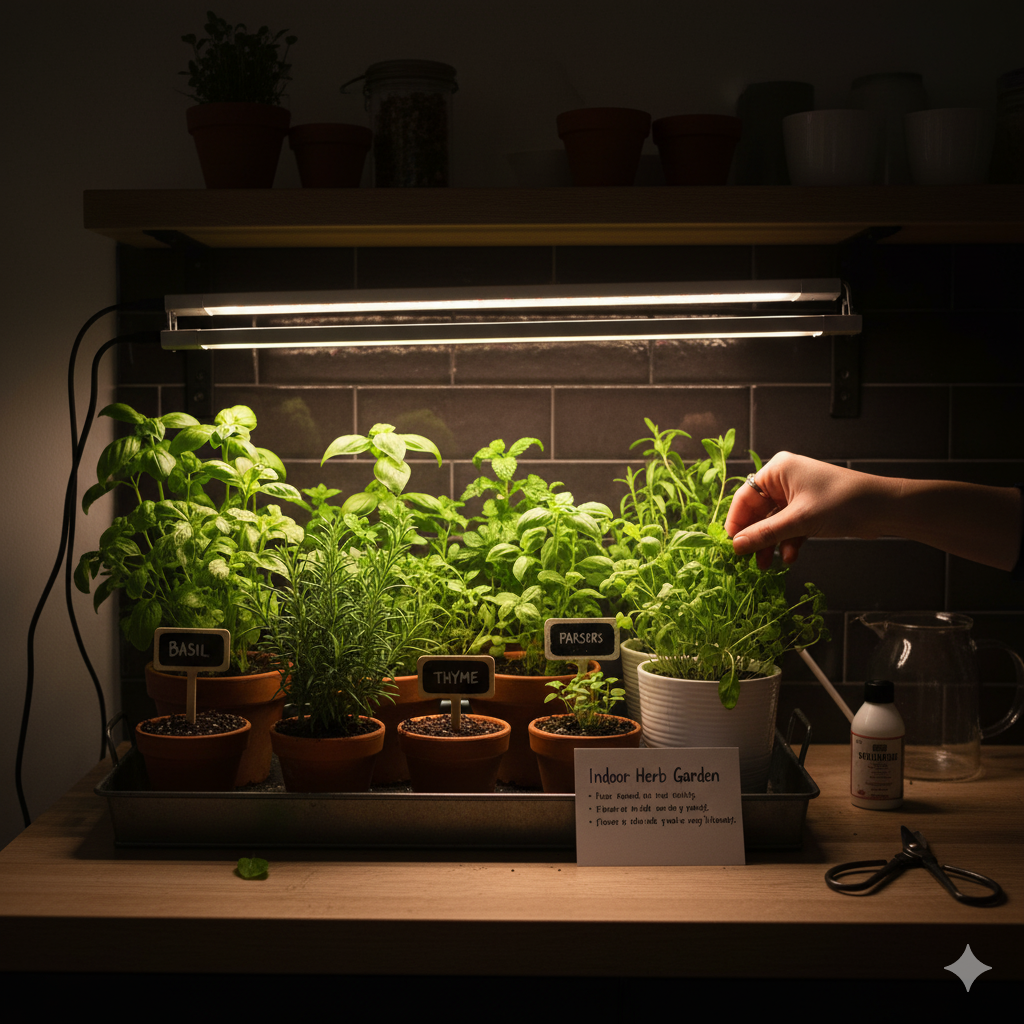
How to Grow Herbs Indoors — Even Without Sunlight
You don’t have to give up on your goal of a fresh herb garden just because you live in a tiny apartment or a house with little natural light. Everyone has experienced the situation of paying a small fortune for a small bunch of basil that wilts in a day while standing in the grocery store aisle. The good news is that, regardless of how gloomy your living room or kitchen may be, you can still bring the scent and taste of a garden into your house. You may have a flourishing indoor herb garden that is always within reach if you follow a few easy tips and have a little can-do attitude.
Naturally, the absence of sunlight is the largest obstacle to growing plants inside. However, consider this a chance rather than a constraint. We can supply our own sunlight instead of depending on erratic sunlight. Grow lights wind up being your best buddy in this situation. You don’t have to transform your house into a futuristic lab; you can buy straightforward, reasonably priced LED grow lights online or at any garden supply store. Because they give plants the whole spectrum of light they require to thrive, these lights are revolutionary. You can attach them on a shelf or dangle them over your plants. They should be placed a few inches above the herbs and left there for 12 to 16 hours every day.
It’s similar to making your plants their own little sun.
Having established our “sun,” let us now discuss the herbs themselves. Not every herb is made equal when it comes to growing them indoors. Forgiveness varies from person to person. Great options for novices are parsley, chives, mint, and basil. They are hardy and develop rapidly. It’s preferable to give mint its own pot to avoid it overrunning its neighbors because it’s a bit of a rebel and loves to spread. Although they prefer drier soil, rosemary and thyme also thrive indoors.Since overwatering is a major contributor to indoor plant mortality, it is imperative to keep this fact in mind.
Next, let’s talk about the soil and containers. For dirt, all you need is an excellent potting mix. To avoid damp roots, use one that drains properly. Drainage is also very important for pots. Pots with holes in the bottom should have a little tray underneath to catch any excess water. By following this easy process, you can keep your plants healthy and happy while preventing root rot. Remember, each herb requires a pot of its own. This allows for easier management of their unique feeding and watering needs.
inally, a small amount of attention goes a long way. Watering requires careful balancing. Placing your finger roughly an inch into the ground is a good general rule. It’s time to water if it feels dry; wait if it’s still damp. While fertilization is vital, don’t overdo it. Your herbs will get the boost they require if you use a half-strength liquid fertilizer approximately once a month during the growth season. Additionally, remember to harvest on a frequent basis! Herb pruning promotes bushier growth and a more abundant crop. Simply remove the uppermost leaves, and observe how they flourish.
There you have it, then. Even if your house is a dank, dark cave, you can still grow your own herbs indoors. You may savor the year-round delight of fresh, homegrown herbs with a little light, the appropriate herbs, and a careful watering regimen.
